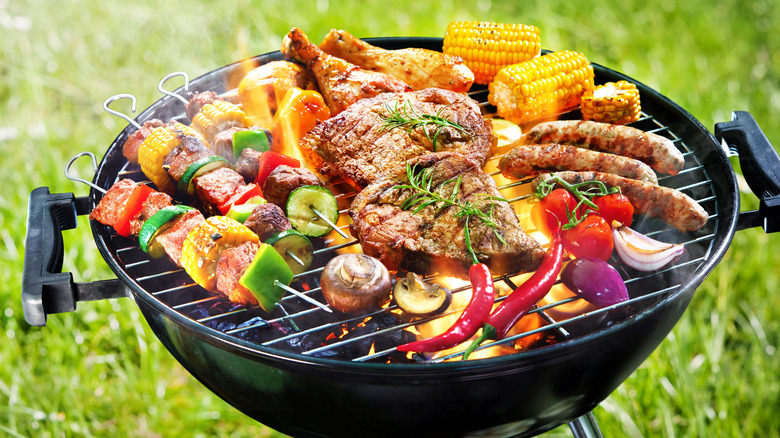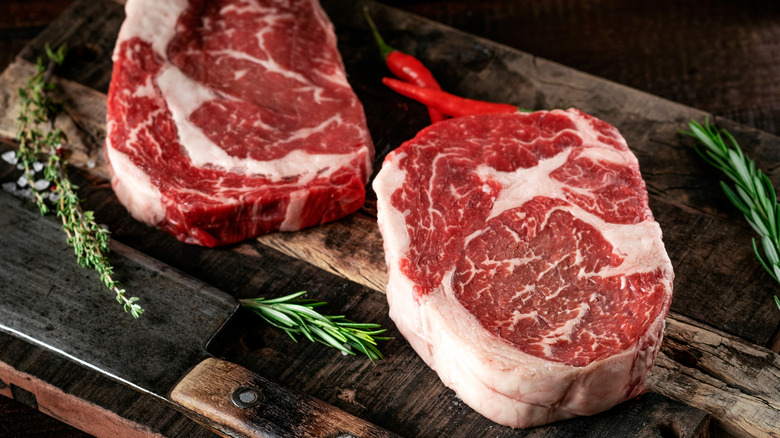Why You Should Rest Your Steak Before Grilling
For those who love to sink their teeth into meat, steak is perhaps the pinnacle form of animal protein: A perfectly cooked steak — whether it's a filet mignon, rib eye, or New York strip — is juicy and big on flavor, the perfect partner to garlicky green beans, parslied potatoes, or beer-battered onion rings. And while it can be fun to tuck a napkin into your collar and sit down at a retro-style steakhouse, cooking steak at home is fairly straightforward once you get the hang of it.
Most steak aficionados would say that grilling is the way to go, producing a nicely charred crust on its exterior and tender meat within (via Smithsonian). But there's more to grilling a perfect steak than lighting some coals and throwing some salt on the meat, including making sure your grill grates are clean and using a thermometer — and not guesswork — to determine when it's done (via The Spruce Eats). And if you've ever grilled steak or cooked meat of any kind, you know that letting the meat rest afterwards is crucial to ensuring that its delicious juices stay inside the meat instead of running out onto your plate once you cut off a slice. But did you know that you should let steaks rest before grilling, too?
Bring your steak up to room temperature before grilling
If you haven't been resting your steaks before placing them on the grill (or in a cast iron pan), then you could be missing out on a more evenly cooked, juicier end result. Let us explain: In this instance, "resting" means "tempering," i.e., pulling the steak out of the fridge about a half hour before you plan to grill, allowing the meat to get closer to room temperature before it's kissed by the flames. According to Bon Appétit, this important step will ensure that the center of the steak isn't super-cold when it's cooked, ultimately shaving a few minutes off the steak's cook time and giving the meat less opportunity to linger on the grill and dry out.
Bringing the center of a steak up to the temperature of the thinner parts of the steak also means that the whole piece will cook more evenly, instead of the thinner parts cooking quickly and the center remaining underdone. As chef Josh Tanner of New York Prime Beef told Eat This, Not That!, "This is important for larger, thicker cuts like a porterhouse or a big, bone-in ribeye. If you throw a cold steak on the grill, it won't cook as evenly and will dry out much more easily."
So the next time steak is on the menu, don't forget to let it rest before and after cooking.

